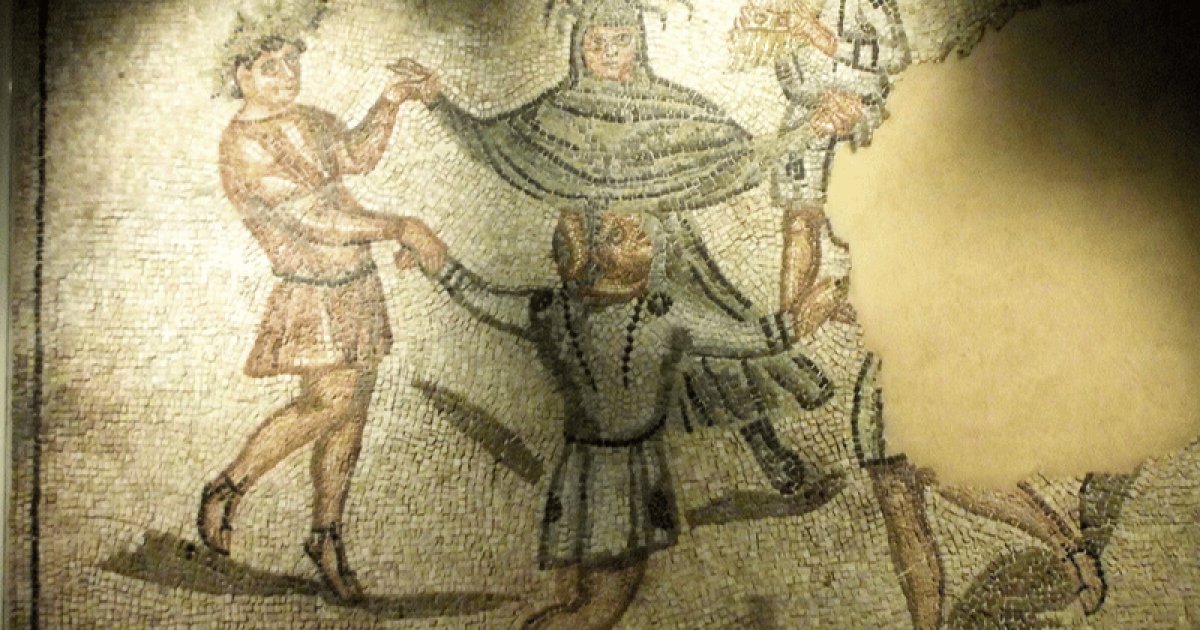DOMUS OF THE STONE CARPETS, Mosaic Of The Dance Of The Genii Of The Seasons
 Language: English / USA
Language: English / USA
The mosaic depicting "the dance of the genii of the seasons," now displayed on a wall, originally decorated the floor of the largest of the Byzantine palace's reception halls. What you see on the floor is in fact a faithful copy.
You should know that sumptuous banquets were held in this hall during which the most important guests lay on triclinia positioned right in front of this floor mosaic.
The subject of the work is represented by four dancing figures holding hands, symbolizing the changing seasons. The man at the bottom, shown with his back turned, dressed in a short white robe, is autumn. Winter is right in front of him, on the opposite side of the circle, wearing a long tunic and a hooded cloak. Behind winter is a fifth figure, a musician playing a wind instrument. On the left of the mosaic, you find spring with a short pink tunic and a garland of flowers on his head, while on the right is summer, whose image unfortunately could not be fully reconstructed. We can guess that he was dressed in a white tunic and that his head was adorned with ears of wheat, but the only well-preserved details are the sandals on his feet.
If you look closely, you can see that the environment in which the seasons are depicted is decorated with garlands, just as they used to do during banquets.
Also, at the feet of all the figures you see the projection of their shadows, an element that gives a sense of perspective to the work and suggests that the subject was copied from a painting.
Another interesting element is the musician's instrument, created with glass paste tiles that make the effect of the metal it was made of more realistic.
Surrounding the central subject is a complex frame with geometric shapes consisting of rhombuses within which decorations alternate, among which you can distinguish, for example, flowers, circles, knots, and blossoms.
An interesting fact: You should know that glass paste tiles were rarely used to make floor mosaics because they were much more fragile. Their color effect, however, was definitely more striking. Since they were made by casting metals into them, this brought out the colors even more.



